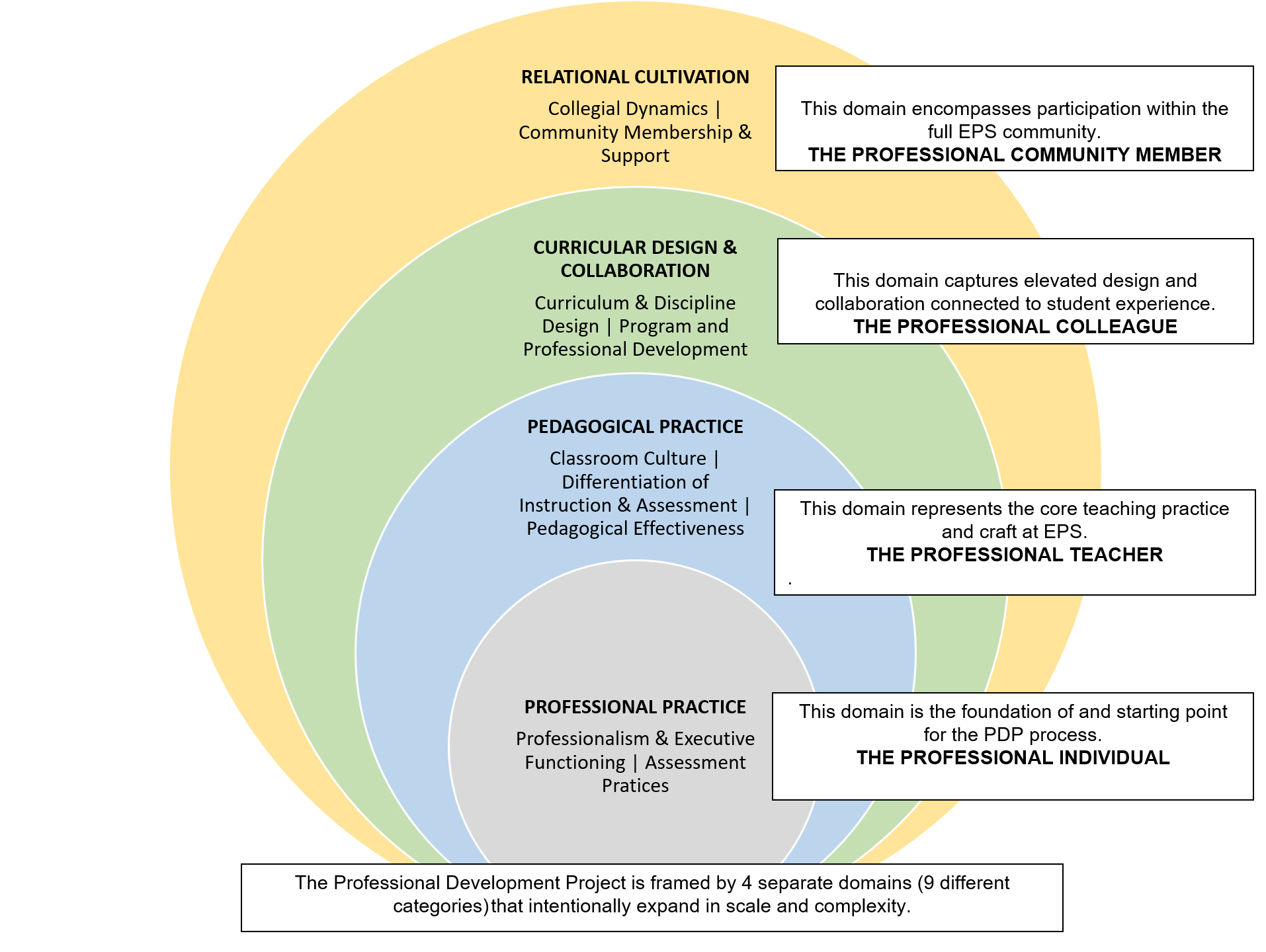Ginger Ellingson (Teacher)
Steve Fassino (Senior Teacher)
Krissy Russell (Master Teacher)
Kip Wassink (Master Teacher)
Karen Mills (Mentor Teacher)
Katie Dodd (Master Teacher)
Anne Duffy (Master Teacher)
Melissa Hayes (Master Teacher)
Stephen Keedy (Master Teacher)
Josefa Ruiz Mercader (Mentor Teacher)
Masato Sudo (Teacher)
Jeff Bandel (Teacher)
Ian Corey-Boulet (Teacher)
Jonathan Briggs (Mentor Teacher)
Ed Castro (Master Teacher)
Matt Delaney (Mentor Teacher)
Sarah Aguiar (Teacher)
David Lao (Teacher)
Elena Olsen (Mentor Teacher)
Malcolm Yates (Teacher)
At Eastside Preparatory School (EPS), building and maintaining our high-trust culture is our most important pursuit. Everyone in our community reinforces and reinvents the culture daily.
The Professional Development Project (PDP) emerged from a recognition that teaching is like few other professions—there isn’t a career ladder or a ‘next step’ without leaving the classroom. EPS created the PDP to stimulate the professional ethos of our community through hiring and developing great teachers—and to keep their practice evolving by identifying clear targets for advancement. The program works on two planes—building capacity among existing teachers and those new to teaching in an independent school. The model encourages personal and professional growth, and sets high yet achievable standards, while creating a sense of professional belonging. This is done by providing clear measures for high-quality teaching, recognizing professional growth as teachers advance to one of five levels on a professional ladder, and providing a compensation increase as each level is achieved.
Most professional development models in schools are evaluative in nature and facilitated by an over-stretched administrator on whom the success of the evaluative process depends. At EPS, the PDP advances professional development by leveraging the high-trust nature of our community. Faculty working toward each PDP level do so with the support and critique of a team of fellow teachers throughout a 1-year process. Teachers engaged in the portfolio process start as part of a cohort and are then surrounded by a feedback team facilitated by a Master or Senior Teacher rather than an administrator.
Essential to building and sustaining a professional ecosyste m are the feedback loops these teams create. Each team meets monthly, does classroom observations, and provides feedback as candidates gather evidence and reflect on 4 domains (each of which includes 3 to 4 categories). The domains intentionally move from the individual professional to the professional’s role in the broader community. The first domain, Professional Practice (professional and executive functioning, assessment practice) focuses on being an effective professional, the second, Pedagogical Practice (classroom culture, pedagogical effectiveness, differentiated instruction and assessment) focuses on excellence in the classroom, the third on Curricular Design and Collaboration (curriculum and discipline design, program and professional development), examines the broader realm of collaborative curricular development, and finally, Relational Cultivation (collegial dynamics, community membership and support) explores the role of the professional educator in the broader school community.
m are the feedback loops these teams create. Each team meets monthly, does classroom observations, and provides feedback as candidates gather evidence and reflect on 4 domains (each of which includes 3 to 4 categories). The domains intentionally move from the individual professional to the professional’s role in the broader community. The first domain, Professional Practice (professional and executive functioning, assessment practice) focuses on being an effective professional, the second, Pedagogical Practice (classroom culture, pedagogical effectiveness, differentiated instruction and assessment) focuses on excellence in the classroom, the third on Curricular Design and Collaboration (curriculum and discipline design, program and professional development), examines the broader realm of collaborative curricular development, and finally, Relational Cultivation (collegial dynamics, community membership and support) explores the role of the professional educator in the broader school community.